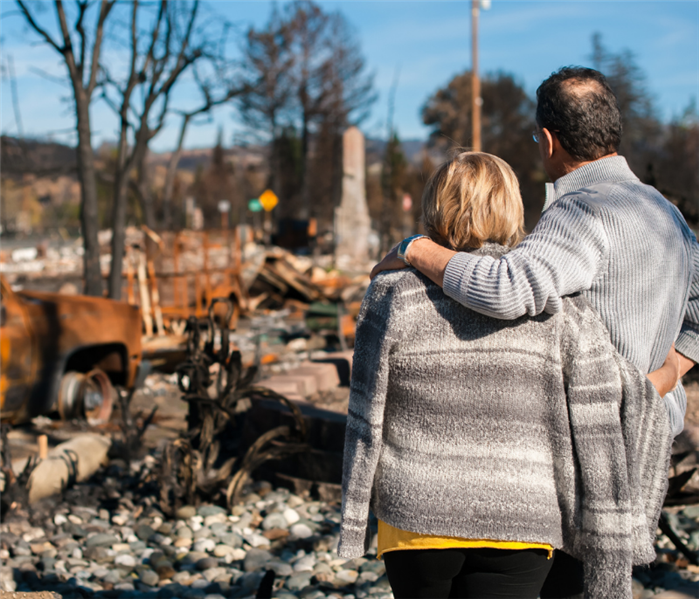How To Prepare For A Tornado
10/29/2020 (Permalink)
If a tornado warning was issued in your area - Would you feel prepared? The most effective way to stay safe during severe weather or a tornado is to be ready well before it ever hits. Don't wait for extreme weather to devise a plan with your family. Instead, take these steps to always be prepared for extreme weather in your area, especially if it is common.
How To Be Prepared For Extreme Weather
- Have a plan for where you and your family will go in case a tornado strikes. Have a plan ready for different places your family is frequently at - Home, work, or at friend's or relatives' houses.
- Designate what room in your home people and pets should take shelter in during extreme weather. Ideally this should be in the lowest level of your home, such as a basement or cellar. If you don't have either of these, find an interior room in your home on the lowest floor with no windows or exterior doors.
- Teach children what position they should be in during a tornado to stay safe from flying debris: Sit low with your arms covering your head and neck.
- Always have a first aid kit ready and stocked in your home in case of emergency or in the event emergency services are disrupted.
- Check with your work and children's school or daycare regarding their tornado safety protocols and emergency dismissal policies.
- Locate the closest shelter or evacuation shelter so you are already informed if your home is damaged in the tornado.
- Teach your family what to do when extreme weather strikes, where the emergency and first aid kit is, as well as how and when to turn off the electricity, water, and gas in your home. Mark these shutoff valves to make it easy for others to turn them off if needed.
- Teach your family the difference between a tornado watches and warnings.
- Tornado watch: This means that the current weather conditions are just right to generate a tornado, but there has not been one spotted. When a watch is sent out, teach your family to avoid going outside if possible until it passes and to keep an eye on the weather announcements.
- Tornado warning: This means that a tornado has been spotted in the surrounding area and that you should immediately find shelter in a sturdy building and take cover.
- Learn the warning signs of a tornado:
- Dark or green colored sky
- Large, dark, low lying cloud
- Large hail
- Loud roar that sounds similar to a freight train
- Have your emergency kit always stocked and ready. According to the Red Cross, it should contain at least the following:
- Water - One gallon per person, per day
- Food - Non-perishable items that are easy to prepare, even without power
- Flashlight - Battery powered and hand-crank is best
- Radio - Battery powered or hand-crank
- Extra batteries
- First aid kit
- Stocked for all everyday medications
- A multi-purpose tool
- Personal hygiene items
- Copies of all important personal documents
- Cell phones and chargers
- Emergency contact information
- Extra cash
- Emergency blanket - These are brightly colors and heat reflective if you are stranded
- Pet supplies
Take these steps to ensure that you and your family are well-prepared any time extreme weather or tornadoes strike in your area.






 24/7 Emergency Service
24/7 Emergency Service
